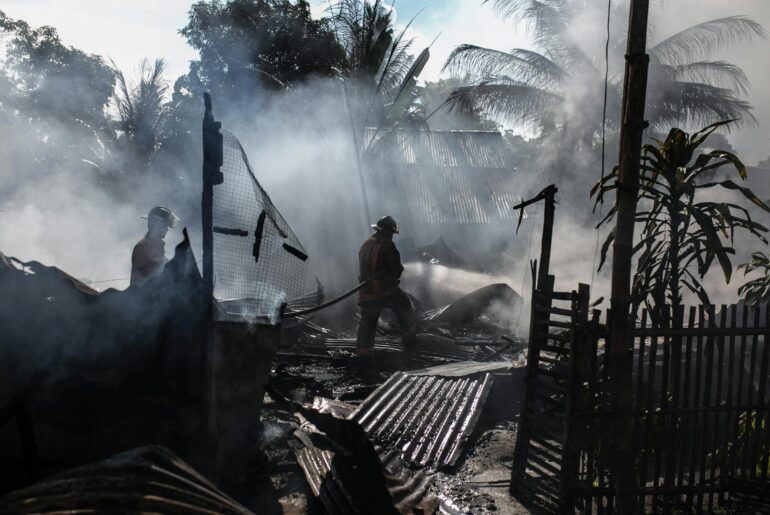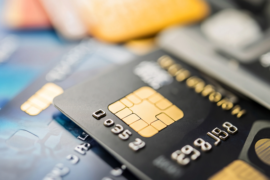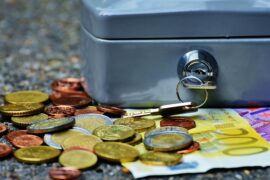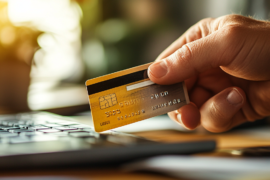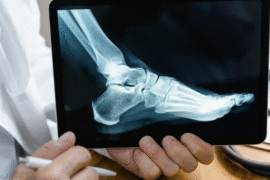This article may contain references to products or services from one or more of our advertisers or partners. We may receive compensation when you click on links to those products or services. Nonetheless, our opinions are our own.
The information presented in this article is accurate to the best of our knowledge at the time of publication. However, information is subject to change, and no guarantees are made about the continued accuracy or completeness of this content after its publication date.
Natural disasters frequently occur unexpectedly, leaving a path of chaos that extends beyond mere physical harm. The emotional cost is immediate, but the financial cost can take a long time to show up and keep going. Many people are facing a whole new financial reality, from damaged property to lost income. When things are so uncertain, knowing where to get help, how to use resources, and how to feel in control again can make them easier.
We will provide people with practical steps and accessible tools to assist them in improving their financial situation and being more prepared for future challenges.
- Starting with a Financial Snapshot: Assessing Your Situation
- Emergency Relief Programs: Immediate Pathways to Support
- Creating a Responsive Budget: Adapting to Changed Circumstances
- Laying a Safety Net: Rebuilding or Starting an Emergency Fund
- Professional Insight: Working with Financial Advisors
- Securing Stability: Steps Toward Long-Term Recovery
- Additional Support: Navigating Practical Challenges
- Conclusion
- Frequently Asked Questions
- Recommended Reads
Starting with a Financial Snapshot: Assessing Your Situation
As recovery efforts begin, one of the most grounding actions is to evaluate the state of personal finances. Amid the disruption, taking inventory can feel overwhelming, yet it serves as the foundation for any meaningful progress.
Start by gathering information on:
- Damaged or lost property
- Insurance coverage and claim status
- Current debts and their payment schedules
- Available savings and liquid assets
Knowing both the losses incurred and the resources remaining will inform decisions about what needs urgent attention and where assistance may be necessary. A revised budget may be required to reflect the temporary or permanent changes in income, living expenses, and financial responsibilities.
Emergency Relief Programs: Immediate Pathways to Support
After a disaster, federal, state, and local governments, as well as nonprofit organizations, work together to help those affected by giving them money. These resources are often made to be used quickly to help with immediate needs like temporary housing, food, medical bills, and necessary repairs.
Resources worth exploring include:
- FEMA Individual Assistance: Offers support for housing, personal property loss, and critical needs.
- State and Local Aid: Many state-level agencies administer targeted grants or disaster recovery funds.
- Local Organizations: Community centers, religious groups, and nonprofits may distribute direct relief or connect residents with relevant services.
- Red Cross: Offers emergency shelter and support for displaced individuals, along with financial assistance in select cases.
Being on time is important. Relief programs usually start up soon after a disaster is declared, and the application windows may close quickly. Getting proof of residence, identification, and photos of damage quickly can make it more likely that you will get help.
Creating a Responsive Budget: Adapting to Changed Circumstances
Being able to change is key to getting back on your feet financially. When income and expenses change, a new budget becomes more than just a spreadsheet; it becomes a way to stay alive and stable.
Evaluate your most essential needs first, then adjust your budget to prioritize them. These priorities often include:
- Housing (rent or mortgage)
- Food and household supplies
- Medical costs
- Transportation
Compare your original budget with your current needs using a simple chart:
| Category | Before Disaster | After Disaster |
|---|---|---|
| Housing | $1,200 | $1,500 |
| Groceries | $400 | $600 |
| Transportation | $300 | $250 |
| Healthcare | $200 | $400 |
Keep in mind that some expenses may increase due to temporary arrangements or health-related concerns, while others may decrease. Regularly revisiting and adjusting this budget will help keep you in control of your resources as conditions evolve.
Laying a Safety Net: Rebuilding or Starting an Emergency Fund
For those who experienced financial strain during a natural disaster, the importance of emergency savings becomes especially apparent. An emergency fund serves as a buffer against unexpected expenses and offers peace of mind in uncertain situations.
Even modest contributions can make a meaningful difference over time. To build momentum:
- Set realistic goals based on monthly living expenses
- Automate savings with recurring transfers
- Identify areas of non-essential spending to redirect toward savings
A savings goal can be based on three to six months of essential expenses:
| Monthly Expenses | Recommended Fund Range |
|---|---|
| $2,000 | $6,000 – $12,000 |
| $3,000 | $9,000 – $18,000 |
| $4,000 | $12,000 – $24,000 |
As recovery progresses, integrating these savings into your financial plan will help insulate your household from future shocks.
Voted "Best Overall Budgeting App" by Forbes and WSJ
Monarch Money helps you budget, track spending, set goals, and plan your financial future—all in one app.
Get 50% OFF your first year with code MONARCHVIP
Professional Insight: Working with Financial Advisors
Some problems need the help of an experienced professional. A financial advisor who knows how to plan for life after a disaster can help you find options that you might not have thought of, like special grants, smart ways to use insurance money, and managing long-term debt.
Traits to look for in an advisor include:
- Proven experience in disaster-related financial planning
- Transparent fee structure
- A holistic approach that includes short-term recovery and long-term planning
A well-informed advisor can help clarify complex decisions, providing clarity when it’s most needed.
Securing Stability: Steps Toward Long-Term Recovery
Once we address the immediate needs, we should focus on restoring financial stability and building resilience. The recovery process continues long after headlines fade. Establishing a plan for long-term financial health helps reduce vulnerability to future emergencies.
A strong recovery plan may include the following:
- Insurance Review: Confirm that current policies reflect the risks in your area and provide appropriate coverage
- Debt Management: Explore restructuring or hardship programs if repayment is not sustainable
- Savings Strategy: Rebuild savings, including targeted accounts for future emergencies or repairs
- Community Engagement: Stay connected with local organizations that can support future needs or share alerts for future risks
Use a structured plan like this:
| Task | Timeline | Required Resources |
|---|---|---|
| Evaluate Damage | Week 1 | Insurance Policy, Photos |
| Contact Relief Agencies | Week 2 | Application Forms, ID |
| Adjust Budget | Month 1 | Budgeting Tools, Income Records |
| Begin Emergency Savings | Ongoing | Bank Account, Monthly Target |
Tracking progress helps maintain a sense of control, even in unpredictable times.
People who are recovering from a disaster may need more than just money to help them get better. Getting new copies of lost documents, finding temporary housing, or finding childcare can all slow down recovery. You can often find more help by getting in touch with local housing authorities, social services, or school districts.
Keep copies of important documents, including:
- Proof of address
- Insurance policies
- Government-issued ID
- Financial statements
Keeping an up-to-date file, whether it’s on paper or in a computer, can make it easier to apply for things in the future and speed up communication with agencies and institutions.
Conclusion
Getting back on your feet after a natural disaster isn’t just about rebuilding your home; it’s also about getting your finances back in order and your peace of mind back. You can go from dealing with an immediate crisis to long-term stability by taking planned steps like looking at your finances, changing your budget, getting help in an emergency, and working with professionals. To be better prepared for future problems, you should rebuild your emergency fund, stay up to date on the resources available to you, and review your insurance and financial plans. It can be hard to get better, but having a clear financial plan gives you the power to take charge, make smart choices, and rebuild your life with confidence.
Frequently Asked Questions
What should I do first if a natural disaster affects my finances?
Begin by documenting all losses, including property damage, lost income, and increased expenses. Contact your insurance provider and gather receipts or evidence to support your claims. Prioritize critical expenses such as housing and medical needs and reach out to financial relief programs promptly.
How can I get emergency funds quickly?
Check eligibility for federal and state relief programs, including FEMA. Local charities and nonprofits may also offer short-term financial assistance. If you have savings set aside, use them first for essential needs.
What help is available for managing debt after a disaster?
Many creditors offer temporary hardship programs or modified payment plans. Reach out to lenders early to explain your situation. Debt consolidation may also be an option for those with multiple balances.
What’s the best way to handle insurance claims?
Keep detailed records, including photos of damage, written documentation, and correspondence with your insurer. File your claim quickly and follow up consistently. Understanding the terms of your policy is key to maximizing your benefits.
How do I prepare for future emergencies?
Review and update your insurance coverage regularly. Build an emergency fund, and create a communication plan with family members. Work with financial professionals if needed to strengthen your overall financial preparedness.

Reviewed and edited by Albert Fang.
See a typo or want to suggest an edit/revision to the content? Use the contact us form to provide feedback.
At FangWallet, we value editorial integrity and open collaboration in curating quality content for readers to enjoy. Much appreciated for the assist.
Did you like our article and find it insightful? We encourage sharing the article link with family and friends to benefit as well - better yet, sharing on social media. Thank you for the support! 🍉
Article Title: Where to Turn When a Natural Disaster Upends Your Finances
https://fangwallet.com/2025/06/21/natural-disaster-recovery/The FangWallet Promise
FangWallet is an editorially independent resource - founded on breaking down challenging financial concepts for anyone to understand since 2014. While we adhere to editorial integrity, note that this post may contain references to products from our partners.
The FangWallet promise is always to have your best interest in mind and be transparent and honest about the financial picture.
Become an Insider

Subscribe to get a free daily budget planner printable to help get your money on track!
Make passive money the right way. No spam.
Editorial Disclaimer: The editorial content on this page is not provided by any of the companies mentioned. The opinions expressed here are the author's alone.
The content of this website is for informational purposes only and does not represent investment advice, or an offer or solicitation to buy or sell any security, investment, or product. Investors are encouraged to do their own due diligence, and, if necessary, consult professional advising before making any investment decisions. Investing involves a high degree of risk, and financial losses may occur including the potential loss of principal.
Source Citation References:
+ Inspo
There are no additional citations or references to note for this article at this time.
